
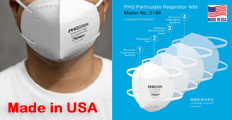
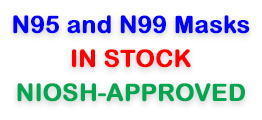

Find all of your laboratory and workplace safety supplies at Safety Emporium!
 HRS |
 Glossary Index |
 Hydrocarbon |
| MSDS Topics |
Free Sites | FAQ's | Regulations | Glossary | Software | Suppliers |
| Books | Forum | Poll | Fun stuff | Quiz | Store | |
| Understand your MSDS with the MS-Demystifier | Search ALL our MSDS info | |||||
Hazard Statements (H-Statments) are part of the Globally Harmonized System of Classification and Labeling of Chemicals (GHS). Hazard statements provide standardized wording to indicate the hazards of a product including, when appropriate, the degree of the hazard.
The GHS also has Precaution Statements which provide standardized precaution wordings. You will usually find both P- and H-statements on a label or Safety Data Sheet.
In the European Union, H-statements have replaced Risk phrases (R-phrases) with the adoption of the GHS under Regulation (EC) No 1272/2008 (20 MB PDF file). Conversions of R-phrases to H-statements are listed in Annex 7 of that document.
Hazard statements are assigned a unique numerical code which can be used as a handy reference when translating labels and Safety Data Sheets written in other languages. The codes are not a substitute for writing out the entire text of the statement.
The codes have the form Hnxx where H stands for "hazard statement"; n=2 for physical hazards, n=3 for health hazards, and n=4 for environmental hazards; and xx is a sequential numbering scheme.
Thus, an SDS or label might bear a statement such as "May be corrosive to metals (H290)". H indicates a Hazard, the 2 indicates a physical hazard, and 90 is part of the numbering scheme.
| Code | Physical hazard statement | Hazard Class (GHS Chapter) | Hazard Category |
|---|---|---|---|
| H200 | Unstable explosive | Explosives (chapter 2.1) | Unstable explosive |
| H201 | Explosive; mass explosive hazard | Explosives (chapter 2.1) | Division 1.1 |
| H202 | Explosive; severe projection hazard | Explosives (chapter 2.1) | Division 1.2 |
| H203 | Explosive; fire, blast or projection hazard | Explosives (chapter 2.1) | Division 1.3 |
| H204 | Fire or projection hazard | Explosives (chapter 2.1) | Division 1.4 |
| H205 | May mass explode in fire | Explosives (chapter 2.1) | Division 1.5 |
| H220 | Extremely flammable gas | Flammable gases (chapter 2.2) | 1 |
| H221 | Flammable gas | Flammable gases (chapter 2.2) | 2 |
| H222 | Extremely flammable aerosol | Flammable aerosols (chapter 2.3) | 1 |
| H223 | Flammable aerosol | Flammable aerosols (chapter 2.3) | 2 |
| H224 | Extremely flammable liquid and vapour | Flammable liquids (chapter 2.6) | 1 |
| H225 | Highly flammable liquid and vapour | Flammable liquids (chapter 2.6) | 2 |
| H226 | Flammable liquid and vapour | Flammable liquids (chapter 2.6) | 3 |
| H227 | Combustible liquid | Flammable liquids (chapter 2.6) | 4 |
| H228 | Flammable solid | Flammable solids (chapter 2.7) | 1, 2 |
| H240 | Heating may cause an explosion | Self-reactive substances and mixtures (chapter 2.8); and Organic peroxides (chapter 2.15) | Type A |
| H241 | Heating may cause a fire or explosion | Self-reactive substances and mixtures (chapter 2.8); and Organic peroxides (chapter 2.15) | Type B |
| H242 | Heating may cause a fire | Self-reactive substances and mixtures (chapter 2.8); and Organic peroxides (chapter 2.15) | Types C, D, E, F |
| H250 | Catches fire spontaneously if exposed to air | Pyrophoric liquids (chapter 2.9); Pyrophoric solids (chapter 2.10) | 1 |
| H251 | Self-heating;; may catch fire | Self-heating; substances and mixtures (chapter 2.11) | 1 |
| H252 | Self-heating; in large quantities; may catch fire | Self-heating; substances and mixtures (chapter 2.11) | 2 |
| H260 | In contact with water releases flammable gases which may ignite spontaneously | Substances and mixtures which, in contact with water, emit flammable gases (chapter 2.12) | 1 |
| H261 | In contact with water releases flammable gas | Substances and mixtures which, in contact with water, emit flammable gases (chapter 2.12) | 2, 3 |
| H270 | May cause or intensify fire; oxidizer | Oxidizing gases (chapter 2.4) | 1 |
| H271 | May cause fire or explosion; strong oxidizer | Oxidizing liquids (chapter 2.13); Oxidizing solids (chapter 2.14) | 1 |
| H272 | May intensify fire; oxidizer | Oxidizing liquids (chapter 2.13); Oxidizing solids (chapter 2.14) | 2, 3 |
| H280 | Contains gas under pressure; may explode if heated | Gases under pressure (chapter 2.5) | Compressed gas Liquefied gas Dissolved gas |
| H281 | Contains refrigerated gas; may cause cryogenic burns or injury | Gases under pressure (chapter 2.5) | Refrigerated liquefied gas |
| H290 | May be corrosive to metals | Corrosive to metals (chapter 2.16) | 1 |
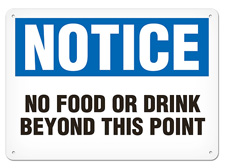
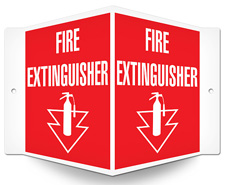
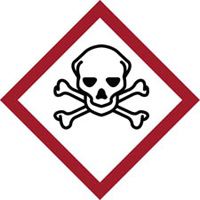
Safety Emporium carries all kinds of signs to help protect your workplace. | |||
| Code | Health hazard statement | Hazard Class (GHS Chapter) | Hazard Category |
|---|---|---|---|
| H300 | Fatal if swallowed | Acute toxicity, oral (chapter 3.1) | 1, 2 |
| H301 | Toxic if swallowed | Acute toxicity, oral (chapter 3.1) | 3 |
| H302 | Harmful if swallowed | Acute toxicity, oral (chapter 3.1) | 4 |
| H303 | May be harmful if swallowed | Acute toxicity, oral (chapter 3.1) | 5 |
| H304 | May be fatal if swallowed and enters airways | Aspiration hazard (chapter 3.10) | 1 |
| H305 | May be harmful if swallowed and enters airways | Aspiration hazard (chapter 3.10) | 2 |
| H310 | Fatal in contact with skin | Acute toxicity, dermal (chapter 3.1) | 1, 2 |
| H311 | Toxic in contact with skin | Acute toxicity, dermal (chapter 3.1) | 3 |
| H312 | Harmful in contact with skin | Acute toxicity, dermal (chapter 3.1) | 4 |
| H313 | May be harmful in contact with skin | Acute toxicity, dermal (chapter 3.1) | 5 |
| H314 | Causes severe skin burns and eye damage | Skin corrosion/irritation (chapter 3.2) | 1A, 1B, 1C |
| H315 | Causes skin irritation | Skin corrosion/irritation (chapter 3.2) | 2 |
| H316 | Causes mild skin irritation | Skin corrosion/irritation (chapter 3.2) | 3 |
| H317 | May cause an allergic skin reaction | Sensitization, skin (chapter 3.4) | 1 |
| H318 | Causes serious eye damage | Serious eye damage/eye irritation (chapter 3.3) | 1 |
| H319 | Causes serious eye irritation | Serious eye damage/eye irritation (chapter 3.3) | 2A |
| H320 | Causes eye irritation | Serious eye damage/eye irritation (chapter 3.3) | 2B |
| H330 | Fatal if inhaled | Acute toxicity, inhalation (chapter 3.1) | 1, 2 |
| H331 | Toxic if inhaled | Acute toxicity, inhalation (chapter 3.1) | 3 |
| H332 | Harmful if inhaled | Acute toxicity, inhalation (chapter 3.1) | 4 |
| H333 | May be harmful if inhaled | Acute toxicity, inhalation (chapter 3.1) | 5 |
| H334 | May cause allergy or asthma symptoms or breathing difficulties if inhaled | Sensitization, respiratory (chapter 3.4) | 1 |
| H335 | May cause respiratory irritation | Specific target organ toxicity, single exposure; Respiratory tract irritation (chapter 3.8) | 3 |
| H336 | May cause drowsiness or dizziness | Specific target organ toxicity, single exposure; Narcotic effects (chapter 3.8) | 3 |
| H340 | May cause genetic defects (state route of exposure if it is conclusively proven that no other routes of exposure cause the hazard) | Germ cell mutagenicity (chapter 3.5) | 1A, 1B |
| H341 | Suspected of causing genetic defects (state route of exposure if it is conclusively proven that no other routes of exposure cause the hazard) | Germ cell mutagenicity (chapter 3.5) | 2 |
| H350 | May cause cancer (state route of exposure if it is conclusively proven that no other routes of exposure cause the hazard) | Carcinogenicity (chapter 3.6) | 1A, 1B |
| H351 | Suspected of causing cancer (state route of exposure if it is conclusively proven that no other routes of exposure cause the hazard) | Carcinogenicity (chapter 3.6) | 2 |
| H360 | May damage fertility or the unborn child (state specific effect if known)(state route of exposure if it is conclusively proven that no other routes of exposure cause the hazard) | Reproductive toxicity (chapter 3.7) | 1A, 1B |
| H361 | Suspected of damaging fertility or the unborn child (state specific effect if known)(state route of exposure if it is conclusively proven that no other routes of exposure cause the hazard) | Reproductive toxicity (chapter 3.7) | 2 |
| H362 | May cause harm to breast-fed children | Reproductive toxicity, effects on or via lactation (chapter 3.7) | Additional category |
| H370 | Causes damage to organs (or state all organs affected, if known) (state route of exposure if it is conclusively proven that no other routes of exposure cause the hazard) | Specific target organ toxicity, single exposure (chapter 3.8) | 1 |
| H371 | May cause damage to organs (or state all organs affected, if known)(state route of exposure if it is conclusively proven that no other routes of exposure cause the hazard) | Specific target organ toxicity, single exposure (chapter 3.8) | 2 |
| H372 | Causes damage to organs (state all organs affected, if known) through prolonged or repeated exposure (state route of exposure if it is conclusively proven that no other routes of exposure cause the hazard) | Specific target organ toxicity, repeated exposure (chapter 3.9) | 1 |
| H373 | May cause damage to organs (state all organs affected, if known) through prolonged or repeated exposure (state route of exposure if it is conclusively proven that no other routes of exposure cause the hazard) | Specific target organ toxicity, repeated exposure (chapter 3.9) | 2 |
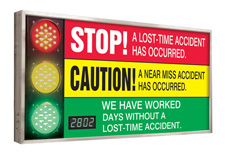
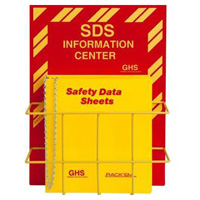

Equip your workplace with emergency response and prevention products from Safety Emporium. | |||
| Code | Environmental hazard statement | Hazard Class (GHS Chapter) | Hazard Category |
|---|---|---|---|
| H400 | Very toxic to aquatic life | Hazardous to the aquatic environment, acute toxicity (chapter 4.1) | 1 |
| H401 | Toxic to aquatic life | Hazardous to the aquatic environment, acute toxicity (chapter 4.1) | 2 |
| H402 | Harmful to aquatic life | Hazardous to the aquatic environment, acute toxicity (chapter 4.1) | 3 |
| H410 | Very toxic to aquatic life with long lasting effects | Hazardous to the aquatic environment, chronic toxicity (chapter 4.1) | 1 |
| H411 | Toxic to aquatic life with long lasting effects | Hazardous to the aquatic environment, chronic toxicity (chapter 4.1) | 2 |
| H412 | Harmful to aquatic life with long lasting effects | Hazardous to the aquatic environment, chronic toxicity (chapter 4.1) | 3 |
| H413 | May cause long lasting harmful effects to aquatic life | Hazardous to the aquatic environment, chronic toxicity (chapter 4.1) | 4 |

Scale up your procedures with Soxhlet extractors from Safety Emporium.
The US, Europe, and numerous other countries have adopted the Globally Harmonized System, which requires manufacturers and importers of potentially hazardous chemicals to perform a hazard classification of the materials they sell or import.
If that process, required under Paragraph (d) of 29 CFR 1910.1200, the OSHA Hazard Communication Standard (HCS 2012), indicates a potential hazard, it must be disclosed by both H- and P-statements (if necessary) on both the Safety Data Sheet (see paragraph (g)) and the label (see paragraph (f)).
Per Appendix D of HCS 2012, the H- and P-statements will appear in Section 2 of the SDS. Note: If a sheet was issued before the HCS 2012 took full effect the (M)SDS may not only be in a different format, it may not contain these statements. If you have a sheet like this in your collection you should attempt to find a current version. Remember that H-statements indicate only the hazards of a material, not the safety precautions that you need to follow. For safety information see the Precaution Statements entry.
This section discusses SDS relevance, but the importance of H- and P-statements on labels is paramount so we will address that here. Per paragraph C.2.2 of Appendix C of HCS 2012, the H-statements will appear on on the label, possibly in a condensed form, unless they are deemed inappropriate:
C.2.2.1
The text of all applicable hazard statements shall appear on the label, except as otherwise specified. The information in italics shall be included as part of the hazard statement as provided. For example: "causes damage to organs (state all organs affected) through prolonged or repeated exposure (state route of exposure if no other routes of exposure cause the hazard)". Hazard statements may be combined where appropriate to reduce the information on the label and improve readability, as long as all of the hazards are conveyed as required.
See also: ANSI, CHIP, EINECS, Precautionary Statements, risk phrases, signal words, UN/NA numbers, and the International Section of the SDS FAQ.
Additional definitions from Google and OneLook.
Entry last updated: Saturday, December 31, 2022. This page is copyright 2000-2025 by ILPI. Unauthorized duplication or posting on other web sites is expressly prohibited. Send suggestions, comments, and new entry desires (include the URL if applicable) to us by email.
Disclaimer: The information contained herein is believed to be true and accurate, however ILPI makes no guarantees concerning the veracity of any statement. Use of any information on this page is at the reader's own risk. ILPI strongly encourages the reader to consult the appropriate local, state and federal agencies concerning the matters discussed herein.